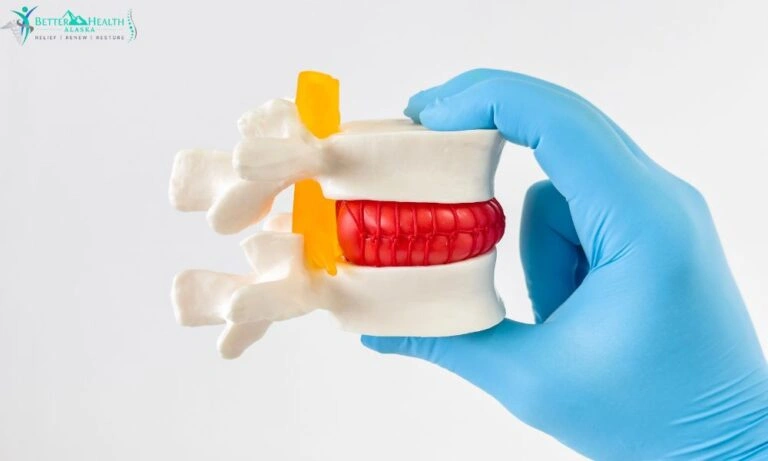Chiropractors are perhaps one of the most misunderstood groups in the health care industry. We are sometimes told that our lives must be “easier” since we aren’t “real” doctors or that we make “easy money” for simply cracking backs.
Neither of these statements are true.
Other times, chiropractors are asked if we really work only 3 or 4 hours a day or we are told that we don’t have a vested interest in healing people, otherwise we would run out of patients (as if car accidents weren’t enough to keep them occupied forever).
These are common myths as well.
In order to clear things up, we would like to describe the typical day of a chiropractor. Of course, like most in the health care industry, you never know what is going to come to your clinic that day, but this is an overview to make people more aware of what a chiropractor does and doesn’t do on an average day.
Before We Begin
Before we start, let’s take a quick look at the training and education a chiropractor goes through just to get their license.
How many years of college does it take to be a chiropractor?
Chiropractors take 4 years of undergraduate education, usually requiring a minimum of a bachelor’s degree. Courses that must be taken include English, social sciences, organic and inorganic chemistry, biology, physics, and psychology.
After receiving their undergraduate degree, a person must take a 4-year chiropractic program, which involves a minimum of 4,200 hours of lab work, classroom studies, and clinical experience. Courses included are anatomy, physiology, public health, microbiology, pathology, and biochemistry, with the last 2 years of study involving manipulation and spinal adjustment and clinical experience in physical and laboratory diagnosis, neurology, orthopedics, geriatrics, physiotherapy, and nutrition.
Depending on which state the chiropractor wants to practice in, additional studies and testing for certification will be required.
So much for not being a “real” doctor.
A Chiropractor’s Typical Day
While many chiropractors work a typical 9-5 day, this obviously depends on their office hours. For the sake of this article, we will make a chiropractor’s work hours a 9-5 workday, however, keep in mind that many chiropractors work longer hours and even weekends in order to provide service to their patients.
7 AM- Getting Up and Around
Since chiropractors are human, they need to do the usual sleeping, eating, showering duties that come with the territory. While this might seem obvious, you might be surprised how many chiropractors read emails or text messages that were sent a 1AM and the patient showing surprise the next morning when the doctor tells them that they were sleeping.
8AM-Computers, Email, and Commuting
Of course, the time spent commuting to work also varies, but it would be fair to say that the typical chiropractor spends at least 15-30 minutes each morning checking their email and text messages to see if anything vital has occurred during the night or if they are being contacted by any patients who need/want immediate assistance.
It is probably also fair to say that a fair number of chiropractors do something office related while commuting, whether it be paperwork that needs to be completed on the train or returning phone calls via a hands free set while driving.
9AM-12PM-Patients and More
 How many patients does a chiropractor see in a day? On an average day, a chiropractor sees between 15-30 patients. Patients come to the office with a variety of complaints, including back pain, neck pain, frequent headaches, victims of car accidents, joint pain, and some simply have questions, including:
How many patients does a chiropractor see in a day? On an average day, a chiropractor sees between 15-30 patients. Patients come to the office with a variety of complaints, including back pain, neck pain, frequent headaches, victims of car accidents, joint pain, and some simply have questions, including:
- Can your services help with my blank? (hormone imbalance, allergies, frequent sinus infections, tendonitis, etc.)
- Will an adjustment hurt? (No)
- Am I too old or too young? (No)
- Will my insurance cover this? (Probably, but we will check)
- Adjustments are safe, right? (Yes)
- How many sessions will I need? (Depends)
- Can you help me prevent this (injury) in the future? (If possible, yes)
While a good portion of the day is spent with routine procedures, there are new patients to be assessed and diagnosed, exams to perform, reassessing patient progress, and updating treatment recommendations.
Patients often need more than just adjustments and will need counseling on their diet and exercise program, instructions on a variety of issues including work ergonomics, runners’ gait, weight lifting and exercise techniques, and explaining proper posture for office workers.
12PM-1PM- Lunch
It would be fair to say that a great many chiropractor eat lunch in the office. Some don’t, or they might not every day, but eating lunch at the office allows doctors to review new research, look at upcoming patient files (if they are current patients), catch up on emails or other correspondence, etc.
1PM-5PM- The Workday Afternoon
Seeing more patients and offering consultations. This can also mean checking in with the staff to see if someone is having difficulty with insurance coverage or if there are other issues that might need the doctor’s attention, including hiring new staff, finding replacements or temporary workers for staff that will be out sick, on vacation or maternity leave, writing checks for supplies or other issues.
Chiropractors spend a great deal of time on their feet and even more time communicating with their patients and staff! Any chiropractor will tell you that excellent communication skills are vital for this job, along with compassion and a love for helping people.
5PM-6PM-Business Dealings
If it hasn’t been taken care of earlier in the day, chiropractors often use this time to make phone calls to other doctors, personal calls, and return calls from patients. They might also need to do business related tasks, such as payroll, disinfecting equipment, paying bills, making appointments for maintenance or repairs, ordering business supplies or other business needs, and reviewing both employee and patient files.
If they are lucky, chiropractors have staff to take care of some of the business matters, but there is no way that all tasks can be avoided. Some will require the doctor’s attention, and this can consume valuable time. Most chiropractors also perform community service work and help schools with their students, offering advice or even teaching duties.
6PM-7PM- Commute Home and Personal Stuff
 The commute home is often the same as the one to work. Phone calls are made, paperwork is completed, or files are reviewed, depending on the mode of travel.
The commute home is often the same as the one to work. Phone calls are made, paperwork is completed, or files are reviewed, depending on the mode of travel.
This is also when chiropractors often take care of their own personal business, such as picking up dry cleaning, attending school meetings or other social functions, and buying groceries, like everyone else. If you call your chiropractor during these hours, don’t be surprised when they tell you they are at their kid’s school play or are working out at the gym.
7PM-8PM- Dinner and Then Some
If the doctor hasn’t eaten dinner yet, this is when they will do so and spend some time with their families. If they have eaten, this is the perfect time to return phone calls, give referrals, and/or perform charity work or do marketing.
After 8PM
While it might be a few hours before the doctor decides to hit the hay, there are still plenty of things to do, including hobbies, time for relaxation, or even conducting a bit more business, depending on the person.
Some chiropractors take this time to write articles and emails to their patients, work on their websites, and find out what is going on with new research or techniques within their industry.
Other Considerations
 Keep in mind that some chiropractors work for larger facilities, where as a group of chiropractors or other health care providers, they contribute part of their pay towards building and equipment maintenance, accountants and tax prepares that handle the general staff, and other costs, which means while they have more time, since these duties are performed by others, they also must pay for these services.
Keep in mind that some chiropractors work for larger facilities, where as a group of chiropractors or other health care providers, they contribute part of their pay towards building and equipment maintenance, accountants and tax prepares that handle the general staff, and other costs, which means while they have more time, since these duties are performed by others, they also must pay for these services.
World Spine Day and National Chiropractic Health Month
Among other things, October is National Chiropractic Health Month and October 16th is World Spine Day.
While most of the attention in October goes to breast cancer awareness, why not take one day in October to thank your local chiropractor? Back pain remains the #2 reason people go to the emergency room and the #1 reason people are forced to go on disability.
In this age of the opioid crisis, it’s important to note that back pain is one of the most common reasons doctors give out prescriptions for these addictive pain killers. Chiropractic care uses conservative, drug-free therapies to treat back pain effectively and safely.
The Bottom Line

Unless you are a chiropractor for a celebrity or sports star, the life of a chiropractor isn’t a glamorous one, but it is a fulfilling career. Watching patients progress as they go from pain filled days to walking out of the clinic like a champ brings intense satisfaction. In fact, 70% of chiropractors stated that, despite the difficulty and hard work necessary to get their degrees, they are very satisfied with their jobs and that 92% found their profession meaningful.
If you are in pain, have been in an accident, or if you are tired of dealing with back pain, recurring sciatica, or if you have a chronic health problem that causes joint pain, such as arthritis or fibromyalgia, we encourage you to call one of our clinics and make an appointment. You can also make an appointment online by clicking here.
Chiropractors take a holistic, whole-body approach to your health care and strive to give you a life free from pain without drugs or invasive surgery.









